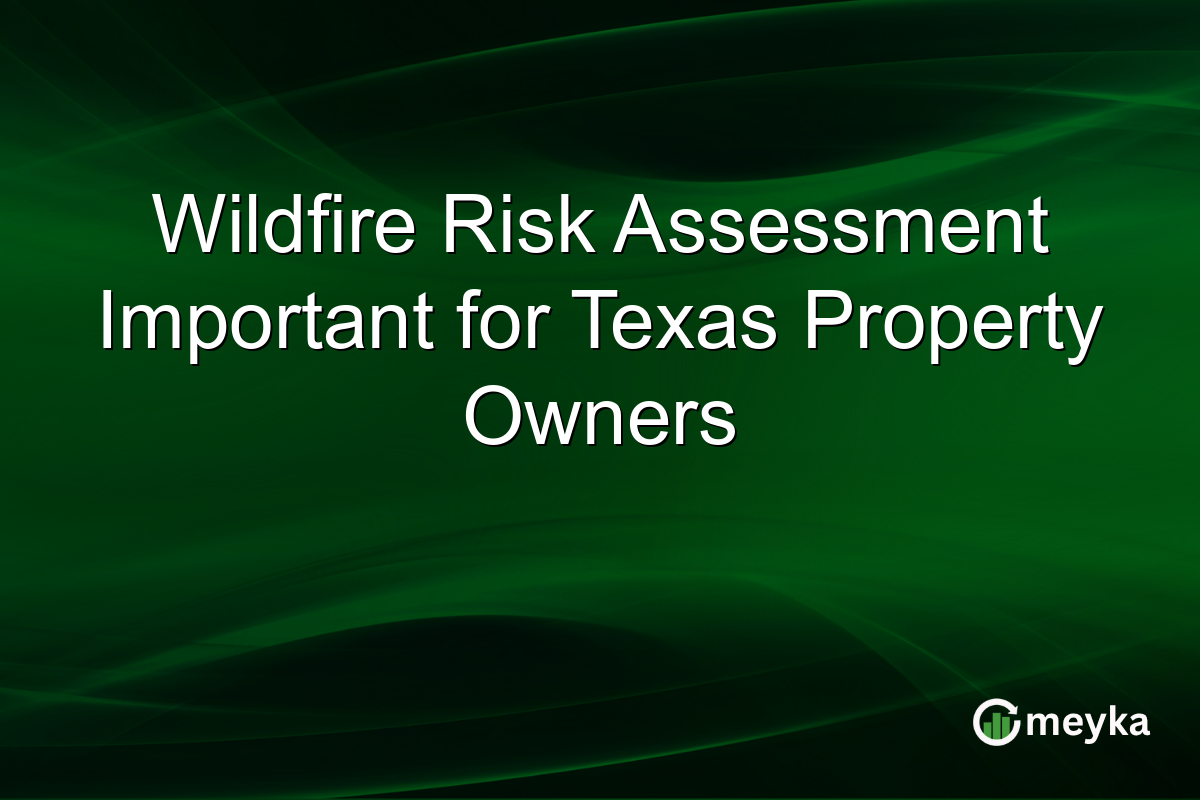Wildfire Risk Assessment Important for Texas Property Owners
With Texas experiencing increased wildfire activity, understanding wildfire risk is crucial for property owners. The Texas A&M Forest Service’s current Level 3 preparedness highlights the urgency of maintaining effective measures. Burn bans and diligent planning are essential strategies for minimizing wildfire damage. This article explores why assessing wildfire risk is vital for Texas property owners.
Understanding Texas Wildfire Risk
Texas is no stranger to wildfires, with its expansive landscapes often prone to such natural disasters. Currently, the Texas A&M Forest Service has set the wildfire preparedness level at Level 3, indicating heightened risk. This means property owners need to understand potential hazards fully.
It’s crucial to recognize that wildfire risk extends beyond the immediate threat of flames. Smoke damage, reduced air quality, and long-term land degradation are also concerns. Implementing robust preparedness measures can safeguard property and health.
For more on current wildfire activity, check updates from sources like Texas A&M Forest Service. This keeps property owners informed and ready to act.
The Role of Burn Bans in Texas
Texas enforces burn bans to prevent wildfires, especially during dry conditions. These legal restrictions prohibit open burning, which could spark fires easily. For property owners, adhering to these rules is critical for community safety.
Burn bans help reduce the risk of accidentally starting a fire, emphasizing preventive over reactive measures. Violating these bans can result in hefty fines, adding to the importance of compliance. By staying updated on local regulations, property owners can contribute to wildfire prevention effectively.
To keep informed about burn bans in your area, check local government websites or the Texas A&M Forest Service for updates.
Effective Wildfire Preparedness Strategies
Wildfire preparedness is more than having an evacuation plan. It involves comprehensive strategies to safeguard property. Start by assessing the landscape around your property. Remove flammable materials like dry leaves and vegetation near structures.
Installing fire-resistant building materials can also protect homes and reduce smoke damage. Educate yourself and family members on evacuation routes and safety procedures. Regular drills can ensure everyone knows what to do during an emergency.
These measures, along with staying informed through wildfire updates, can significantly mitigate risk for property owners.
Final Thoughts
In conclusion, understanding and preparing for Texas wildfire risks is essential for property owners. As the Texas A&M Forest Service maintains a Level 3 preparedness status, acknowledging this heightened risk and acting accordingly is imperative. Complying with burn bans, implementing effective preparedness strategies, and staying informed through reliable updates are proactive steps to protect property and personal well-being. Ultimately, these efforts not only safeguard individual assets but also contribute to the wider community’s safety and readiness.
FAQs
Wildfire risk assessment is crucial because it helps property owners understand potential hazards and implement effective preparedness strategies, minimizing damage and ensuring safety.
Burn bans prevent open burning, reduce accidental fire risks, and promote community safety. They help maintain legal compliance and are crucial during dry conditions.
Key strategies include removing flammable materials, using fire-resistant building materials, staying informed with updates, and conducting regular evacuation drills to ensure preparedness.
Disclaimer:
The content shared by Meyka AI PTY LTD is solely for research and informational purposes. Meyka is not a financial advisory service, and the information provided should not be considered investment or trading advice.






